1978 Star Trek the Motion Picture Art Director Definition
Today, in commemoration of Star Trek Day, Paramount+ has released the remastered Director'south Edition of the first Star Trek feature film, 1979'south Star Trek: The Motion Motion picture, now in 4K UHD.
They gave her back to me, Scotty
Assail lath a refit USS Enterprise, the moving picture reunited the original cast of the television series, with stars William Shatner and Leonard Nimoy returning to their legendary roles of Kirk and Spock. An enormously powerful alien force that destroys everything in its path is heading towards Earth, and the crew of the Enterprise must attempt and stop it while learning about its true nature.
For all its thousand scale, The Move Moving-picture show is ultimately a motion picture nigh identity and finding one'southward path. Kirk, Spock, and 5'Ger are all searching for something that will give them direction and make them feel whole, with each of them finding their answers in very different ways.
The film as released in 1979 was often critiqued for its somewhat languid pace, with some fans dubbing it, "The Motionless Picture." While its pacing left something to be desired, it does tell a story very much in the tradition of the original show while giving Star Trek a greater sense of scale and grandeur. And its great craftsmanship was recognized by the Academy, giving the picture show iii Oscar nominations – Set Decoration, Visual Effects, and Original Score.
The 4K UHD release of Star Expedition: The Move Moving picture – Director'southward Edition brings director Robert Wise's vision of the flick into the modern era with a major update in visuals and sound, and the result is spectacular. A labor of love in every respect, the film is a visual and audible experience similar never before and can finally exist seen as the epic film it was designed to exist.
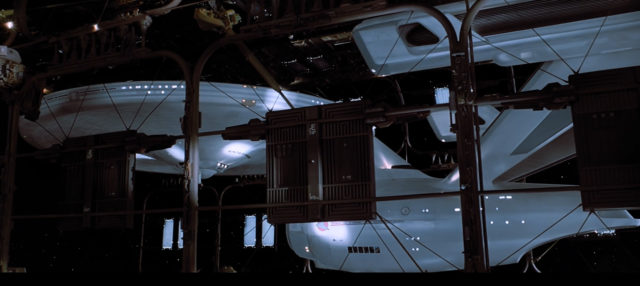
The Enterprise prepares to leave drydock.
Ready or non, she launches
Star Trek: The Motion Flick has had a strange and difficult journey, as far as movies go. Born out of a pilot for a proposed boob tube revival of the original series, the film began production in August 1978 without a finished script and wrapped main photography later than scheduled. That was only the preamble to a much larger problem: the original visitor commissioned to do all the effects piece of work on the movie failed to produce whatsoever usable footage, forcing Paramount to hire visual effects pioneers Douglas Trumbull (2001: A Space Odyssey, The Andromeda Strain, Shut Encounters of the 3rd Kind) and John Dykstra (Star Wars) to complete the work. Having but seven months to finish the effects in social club to come across a locked-in release date in December, the teams worked around the clock – literally. While the visual effects were being created, director Robert Wise and editor Todd Ramsay were trying to notice an editorial shape for the picture show, despite often having large holes where the furnishings should exist. This sometimes forced them to drop whole sequences into the flick as the footage was coming in, with fiddling fourth dimension to massage the edits, which too affected the sound mix and color timing. The pic ultimately met its release date just received a lukewarm response from audiences, who were unaware that what they were seeing was a compromised version of the film, which was a smashing disappointment to Robert Wise.
Fast forward to the belatedly '90s, and the team of restoration supervisor Mike Matessino, producer David Fein, and visual effects supervisor Daren Dochterman teamed up with Wise to arts and crafts a new cutting of the film that would address some of the issues and enhance the story. They tightened the footstep of the motion-picture show, stock-still some of the effects shots, added some others, and put together a new sound mix.
One of the biggest changes fabricated, from a visual storytelling perspective, was the reveal of V'Ger. The theatrical version skipped over this entirely due to fourth dimension constraints, so what V'Ger actually looked like from afar had remained a mystery for more than 20 years. Among the edits Wise made were adding back a few scenes that didn't make the theatrical cut, including some important Spock moments that frankly never should accept been cut in the outset identify. They also added a star field to the film's two-infinitesimal overture (which had previously played over black and was sometimes mistakenly cut out by projectionists). A throwback to the golden age of picture palace, The Move Movie was one of the final films to have an overture (along with Disney'south The Blackness Hole, likewise released in 1979).
Star Trek: The Motion Picture – The Director'due south Edition debuted to positive notices in 2001, with many saying information technology was conspicuously a superior version of the film. Unfortunately, even this version had its compromises. The impress provided by the studio was subpar, and the decision to produce it in standard definition meant information technology was not ready for the and so-upcoming HD era. The team has spent the past 20 years advocating for a return to the film in order to bring it up to current standards and hereafter-proof it and so that it can exist enjoyed for many years to come. Producer David Fein chatted with us recently about this and much more than, which y'all can read here.
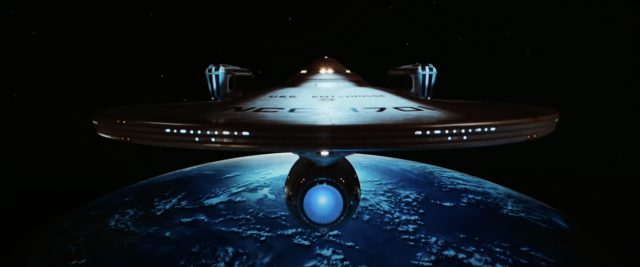
"Nosotros witnessed a birth. Possibly a next step in our evolution."
A Totally New Enterprise?
Af for this new 4K version, the cutting of the film is the same as – or very shut to – the 2001 Manager's Edition. What is different are the changes, both big and small-scale, to the flick'due south visuals and soundtrack.
The original camera negative was scanned at 4K resolution and whatsoever instances of clay or damage were fixed. The team made use of industry standard color grading tools to regrade sure shots and give everything a consequent overall look. In the past, the moving picture's color palette was a bit bland and veered toward the "cold" side. Information technology is at present slightly warmer, particularly in the flesh tones. The added warmth makes the proceedings more appealing and more in line with director Wise's original intentions. It also appears that a certain amount of sharpening was applied to some softer shots, merely it'due south tastefully done. All of it leads to an epitome that showcases Richard Kline's cinematography and gives information technology a polished veneer that makes the film wait like the expensive studio moving-picture show that it was. Information technology far exceeds Paramount's recent 4K transfer of the theatrical cut.
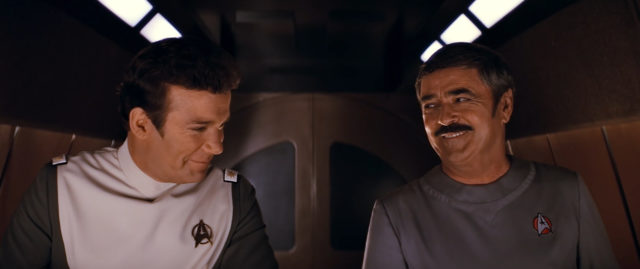
"Well, whatever man who could manage such a feat, I wouldna dare disappoint. She'll launch on fourth dimension, sir."
The visual furnishings meet an even larger upgrade. Paramount was able to locate many of Douglas Trumbull'due south 65mm moving picture elements equally well as John Dykstra's VistaVision footage, which were scanned at 8K and 6K, respectively, and so re-composited and cut into the picture. The results are absolutely stunning. The textures of the Enterprise hull, the layers of the cloud, the details on the V'Ger spacecraft… nearly every original effects shot in the film looks noticeably ameliorate.
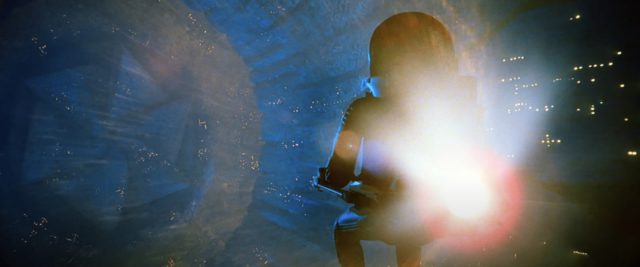
Spock fires his thruster accommodate.
The visual effects that were added as role of the original Director's Edition are besides here simply tweaked a bit, attributable to the increased resolution and xx years of advances in digital effects engineering science. All of it integrates beautifully with the residuum of the flick.
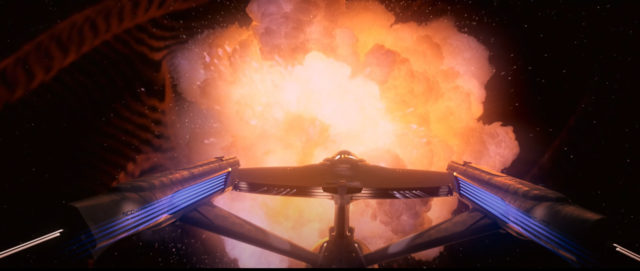
The new visual of the asteroid explosion in the wormhole.
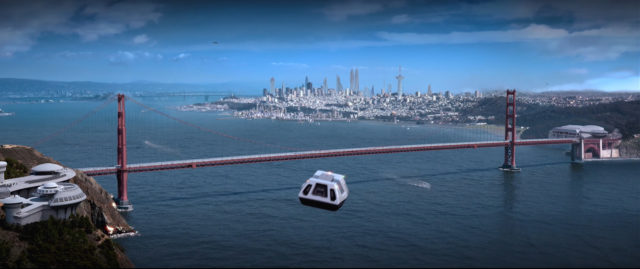
Kirk's tram approaches San Francisco.
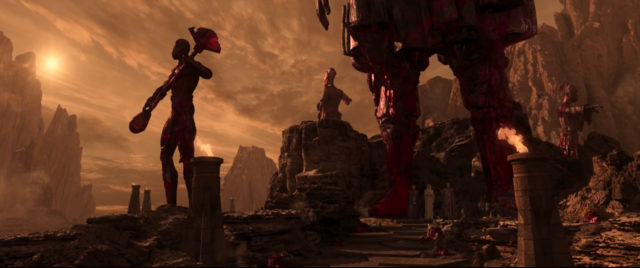
On Vulcan, the Kolinahr masters wait Spock.
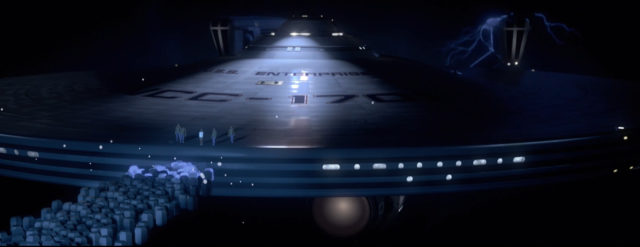
A bridge to 5'Ger forms from points of low-cal.
Maybe the about interesting feature of this projection is the new Dolby Atmos sound mix, which is markedly different from whatever previous version of the film. It is a very active mix with both large and subtle moments that create an environment far denser and more than layered than earlier. Dialogue appears to have been mixed to accept a richer lower cease, making what sometimes seemed a flake tinny now sound much fuller. Every environment is more sonically active. The Enterprise is full of many unlike sounds that actually gives you the experience of existence on starship, and V'Ger itself has far more of an auditory presence and feels more menacing and mysterious.
The team'due south discovery of the original ADR (Automated Dialogue Replacement) tapes gave them the ability to use them in fun and sometimes surprising ways. There was a swell deal of material recorded and never used and some of information technology is applied here in a way that makes the movie's world feel much larger and more lively.
The music cues from Jerry Goldsmith's legendary score take been remixed under the supervision of engineer/producer Bruce Botnick, a longtime colleague of Goldsmith'due south who was office of the original scoring sessions in 1979. Some of the cues feel like they've been remixed in a way that favors a particular instrument, but by and large the score remains the aforementioned and sounds amend than always.
This is a superb audio mix that actually brings the film alive and matches the incredible visuals.
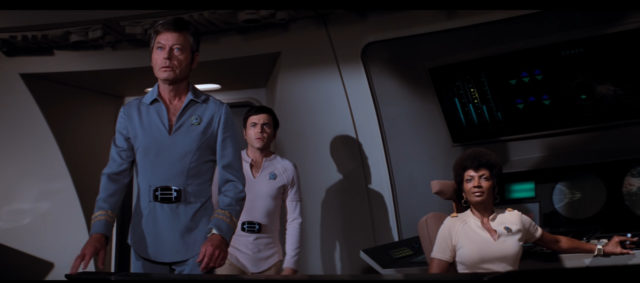
The new sound mix is truly something to hear.
The human chance begins once more
After 42 years, the film has finally been given all the resources and time necessary to present it in the best possible way. It takes all of the adjustments made in the original Manager'due south Edition and improves upon them. The various changes, large and pocket-size, profoundly enhance the story the picture show is trying to tell and truly permit it stand up every bit the most epic of the Star Trek feature films. Even longtime detractors might discover the moving-picture show more to their liking now. For fans of this film, well, in that location is no comparison. This is the definitive version of Star Expedition: The Motion Picture.
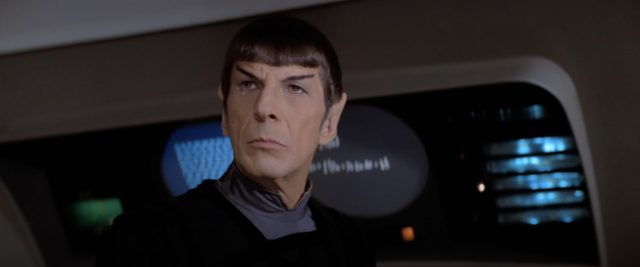
Watching the new 'Director's Edition' is but logical.
Available now
The film is available now on the Paramount+ streaming service in the Us. And in May you can see it on the big screen during a 3-day at theaters across the USA with Fathom Events. Blu-ray and digital releases of the film will arrive in September from Paramount Dwelling Video. International availability has not been announced withal.
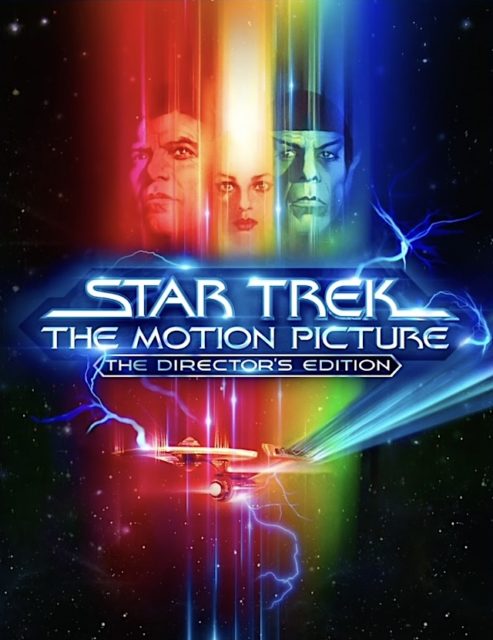
More than to come up
TrekMovie will exist taking a closer look at the many changes in the movie in the coming days, and look for an in-depth discussion on our Shuttle Pod podcast soon.
Find more news about TMP-DE and other Star Trek home media and streaming at TrekMovie.com.
Source: https://trekmovie.com/2022/04/05/review-star-trek-the-motion-picture-comes-alive-in-the-4k-directors-edition/
0 Response to "1978 Star Trek the Motion Picture Art Director Definition"
Post a Comment